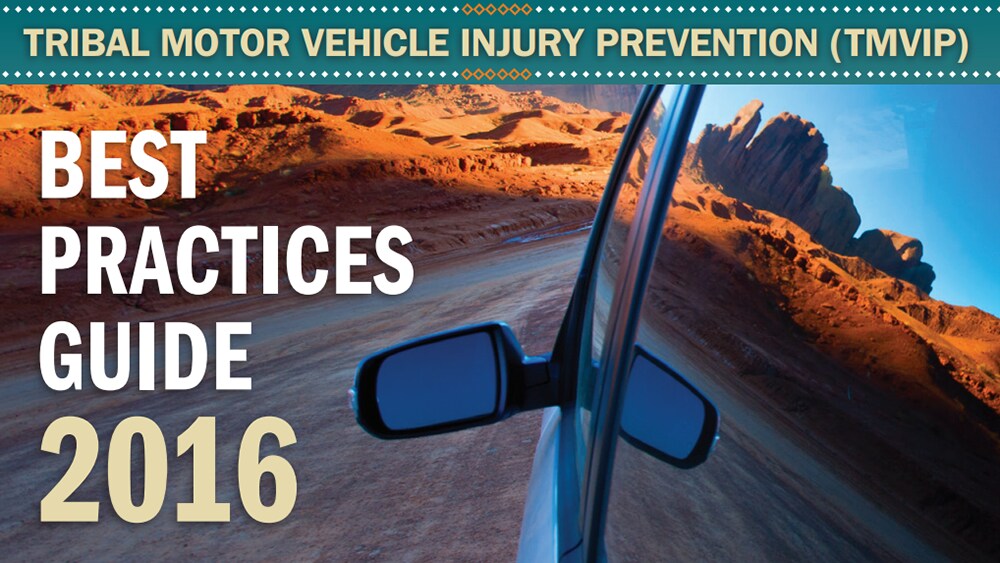What to know
This guide was developed to share lessons learned from several American Indian and Alaska Native Tribes/Tribal Organizations that have tailored and carried out evidence-based strategies to reduce injury and death caused by motor vehicle crashes in their communities.

Tribal Motor Vehicle Injury Prevention Best Practices Guide 2016
The Tribal Motor Vehicle Injury Prevention (TMVIP) Best Practices Guide 2016 provides a summary of the burden of motor vehicle crash injury and death for the American Indian/Alaska Native (AI/AN) community. It offers recommended strategies with examples from Indian Country to increase seat belt use, increase child safety seat use, and reduce alcohol-impaired driving.
The guide also outlines five important components for TMVIP:
- Commitment
- Collaboration
- Data and Evaluation
- Tailored Evidence-Based Strategies
- Technical Support
Within each component, the guide covers what is needed, lessons learned, case examples, resources, and calls to action for TMVIP programs.